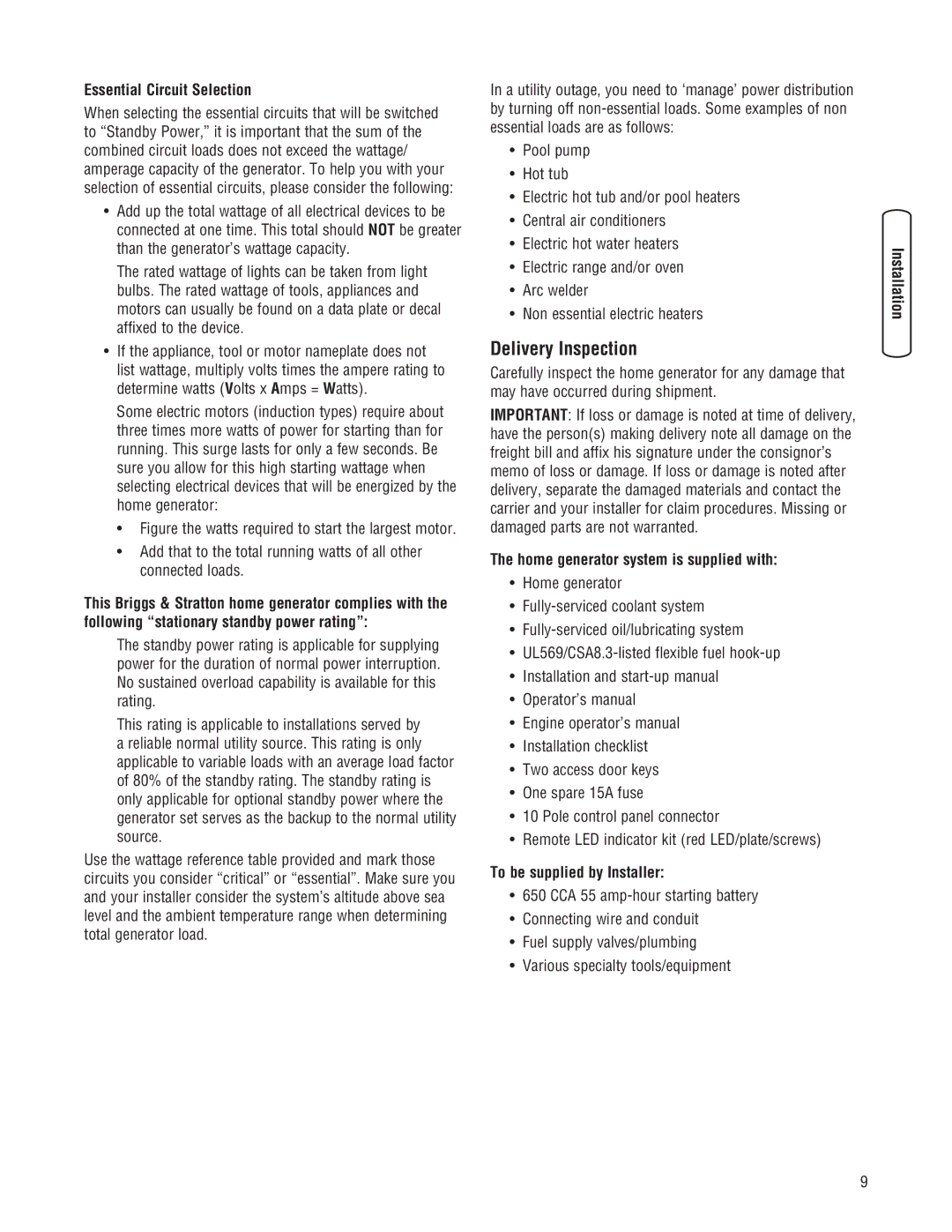Essential Circuit Selection
When selecting the essential circuits that will be switched to “Standby Power,” it is important that the sum of the combined circuit loads does not exceed the wattage/ amperage capacity of the generator. To help you with your selection of essential circuits, please consider the following:
•Add up the total wattage of all electrical devices to be connected at one time. This total should NOT be greater than the generator’s wattage capacity.
The rated wattage of lights can be taken from light bulbs. The rated wattage of tools, appliances and motors can usually be found on a data plate or decal affixed to the device.
•If the appliance, tool or motor nameplate does not list wattage, multiply volts times the ampere rating to determine watts (Volts x Amps = Watts).
Some electric motors (induction types) require about three times more watts of power for starting than for running. This surge lasts for only a few seconds. Be sure you allow for this high starting wattage when selecting electrical devices that will be energized by the home generator:
•Figure the watts required to start the largest motor.
•Add that to the total running watts of all other connected loads.
This Briggs & Stratton home generator complies with the following “stationary standby power rating”:
The standby power rating is applicable for supplying power for the duration of normal power interruption. No sustained overload capability is available for this rating.
This rating is applicable to installations served by a reliable normal utility source. This rating is only applicable to variable loads with an average load factor of 80% of the standby rating. The standby rating is only applicable for optional standby power where the generator set serves as the backup to the normal utility source.
Use the wattage reference table provided and mark those circuits you consider “critical” or “essential”. Make sure you and your installer consider the system’s altitude above sea level and the ambient temperature range when determining total generator load.
In a utility outage, you need to ‘manage’ power distribution by turning off
•Pool pump
•Hot tub
•Electric hot tub and/or pool heaters
•Central air conditioners
•Electric hot water heaters
•Electric range and/or oven
•Arc welder
•Non essential electric heaters
Delivery Inspection
Carefully inspect the home generator for any damage that may have occurred during shipment.
IMPORTANT: If loss or damage is noted at time of delivery, have the person(s) making delivery note all damage on the freight bill and affix his signature under the consignor’s memo of loss or damage. If loss or damage is noted after delivery, separate the damaged materials and contact the carrier and your installer for claim procedures. Missing or damaged parts are not warranted.
The home generator system is supplied with:
•Home generator
•
•
•
•Installation and
•Operator’s manual
•Engine operator’s manual
•Installation checklist
•Two access door keys
•One spare 15A fuse
•10 Pole control panel connector
•Remote LED indicator kit (red LED/plate/screws)
To be supplied by Installer:
•650 CCA 55
•Connecting wire and conduit
•Fuel supply valves/plumbing
•Various specialty tools/equipment
